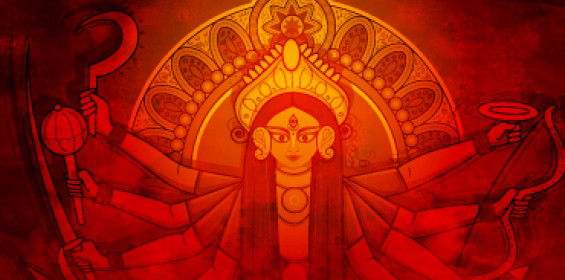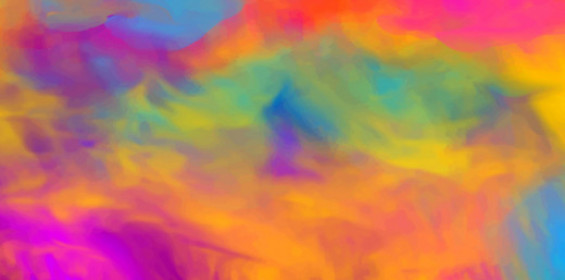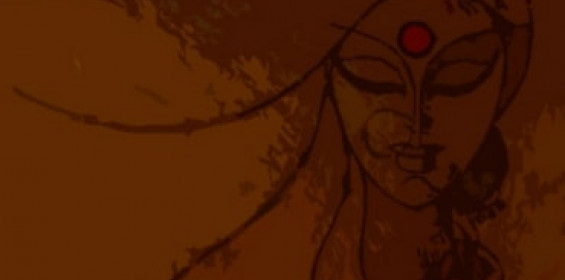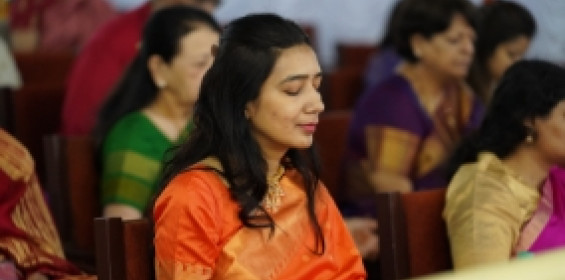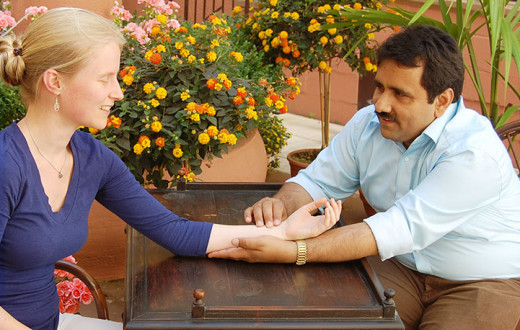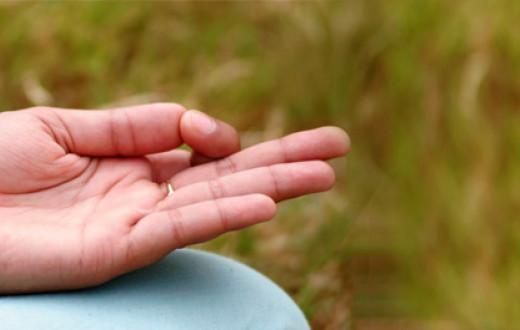Amazing facts about India.
* What is the connection between a pillar built by a Greek ambassador and Krishna?
* Did the Yamuna truly part for Vasudev and the infant Krishna?
* Did the legendary city of Dwarka exist?
The holy book Srimad-Bhagavad describes how people would just stop everything and stare at Krishna when he would pass by. The Bhagavata Purana says that Krishna was so established in the inner nature that it manifested in the beautiful outer form of Krishna, which mesmerized everyone who saw him. What is the truth about Krishna and his time?
Bharath Gyan, a passionate research initiative, is painstakingly dotting the pieces together, foraging amongst lost remnants to keep the glorious past alive and known. Here are some lesser-known facts:

Krishna: real or a myth?
There are several archaeological artefacts from all over India which show a continuity in references to Krishna.
* A Greek ambassador shares an early reference to Krishna:
One of the earliest archaeological sites (on land) that mentions Krishna as Vasudeva is probably the Heliodorus sthamba. This sthamba, a pillar, stands in Vidisha near Sanchi, India. It is a Garuda sthamba (pillar with a Garuda on the top). It was erected by Heliodorus, a Greek Ambassador to India in 120 BCE. Hence, the pillar has acquired the name Heliodorus Sthamba.

Historians have dated this pillar to 113 BCE based on the text inscribed on this sthamba. Heliodorus mentions that this sthamba was being erected in commemoration of Vasudeva and that he became a follower of Krishna’s philosophy.
* Discovery of some rare coins:
A few of the Greek soldiers who came with Alexander in 326 BCE, stayed back in the regions to the north-west of India and became kings of those north-western regions, now historically known as Bactria (present day Afghanistan). One of their more prominent kings was Agathocles or Ai-Khanoum, (180 BCE to 165 BCE) who issued coins during his reign. These square coins were unique: the embossed text had two scripts: Greek and Brahmi.
P. Bernard of a French Archaeological expedition unearthed six such coins. One such coin featured a man standing with a conch and a circular object interpreted as a shield or chakra. P. Bernard said: “...the shield and conch represent Krishna, who was considered a hero by the Bactrian kings also”.
* Jain inspirations shed some light:
The inscriptions of King Samantha Simhaditya of Palitana (a prominent Jain pilgrimage center in Saurashtra) states that Dwaraka, the coastal town, was the capital of western Saurashtra and Krishna had lived there.
* A journey to the South:
A small temple in Manimangalam village near Chennai call their deity, Thuuvarapathi, named after Thuvarai or Dwarka. People from Dwarka migrated to the South of India. Several inspirations suggest this association.
Dwarka: The submerged city in sea
After 17 battles with Jarasandh to protect his people, Lord Krishna moved from Mathura to a place on the coast of Saurashtra to establish his capital there. To grant him his wish, Samudra-dev, the lord of the sea, receded to give him 12 yojanas.

Vishwakarma, the divine architect, built him a new city. Planned and beautiful, this new capital flourished with wealth and was called the Dwarka or Dwaravati. The name thus referring to a place that’s a doorway towards union with Brahma, or in other words a place for spiritual liberation.
After the demise of Krishna, Dwarka was submerged in 3031 BCE.
“...there was really a city which got submerged in Dwarka in 3031 BCE and that the architectural evidence and antiquities such as a seal and inscriptions go to indicate that it was the city of the Mahabharata age.”
When we understand our past, we are prepared for the future. Tap into timeless wisdom from the ancients, and get ready for the future. You will be surprised at how relevant and timely these secrets are. Find out more at The Art of Living Meditation and Breath workshop.
Tap into timeless wisdom from our ancients. Learn the secrets of the mind & breath>>
- Conclusion by marine archaeological investigations conducted by the Marine Archaeology Unit of the National Institute of Oceanography & the Government of Gujarat
Explorations done between 1983 and 1990 have revealed submerged ruins of a great city off present day Gujarat. Built across six sectors, this submerged city’s boundary walls rest on boulders proving that the land was reclaimed from the sea. The general layout of this city matches with the descriptions from the Mahabharata.
The mystery of the Dwarka seal
Among the objects recovered during the marine excavations from Dwaraka, was a distinctive, unique seal of a three-headed animal, with the images of a bull, a unicorn and a goat engraved on it.
This finding establishes the submerged Dwaraka’s connection with the Dwaraka of the Mahabharata. It confirms that the three-headed animal seal, as mentioned in the texts, was not a product of imagination of the author but an account of a fact. The three-headed mudra was a mark of identity for the legal residents of Dwaraka.
“... the seal does corroborate the reference made in the ancient text, the Harivamsa, that every citizen of Dwaraka should carry a mudra as a mark of identification and none without a seal should enter it.”
- Dr. S.R. Rao
This differentiated the citizens of Dwaraka who had migrated along with Krishna, from the infiltrators who kept coming from the ranks of their enemy Jarasandha.
Other facts:
The parting of the river Yamuna: In the Dwarka chapter of the epic Mahabharata, the river Yamuna parted and made a way for Vasudeva to walk while carrying the infant Krishna in a basket.
The waters seemed to be leaping, wanting to touch the feet of Krishna but not daring to go any higher. One of the theories to explain this as a natural, but rare phenomenon, is based on the principle of ‘wind set down.’
The truth behind the Rasleela: The Gopa and Gopi, their yearning for Krishna, symbolize every soul’s yearning for true knowledge. The Raasleela dance stands as a metaphor for the emotions of single-minded adoration, devotion, and unification with the divine that prevailed in the seeker, the simple Gopi.
Krishna’s 16,100 wives: There are many legends which mention that Krishna married 16,100 princesses.
One of these legends revolve around Narakasura. It had been prophesized that Narakasura would die at the hands of a woman. To escape this fate, he imprisoned all the maidens from his, as well as from the nearby kingdoms.

Narakasura, then, went on a rampage, causing widespread distress.
To end this tyranny, Krishna, accompanied by his valiant wife Sathyabhama, went to battle with Narakasura. Sathyabhama engaged Narakasura in a duel and killed him. The prophecy had indeed come true!
Krishna then released all the maidens from captivity.
Once free, all the girls requested Krishna to marry them. The former captives of Narakasura knew society would never accept them. Trapped in dharma, Krishna accepted the women, enabling them to live an honorable life.
The day Narakasura was vanquished and people freed of his terror, is celebrated to this day, as Naraka-chathurdasi. It falls during the period of Deepavali festival.
The material has been sourced from @bharathgyan. This research team, led by a passionate husband-wife duo - Dr. DK Hari and Dr. Hema Hari, unearth some of India’s untold stories and make them contemporary. You can click here to buy any of their books on Indian civilization.

